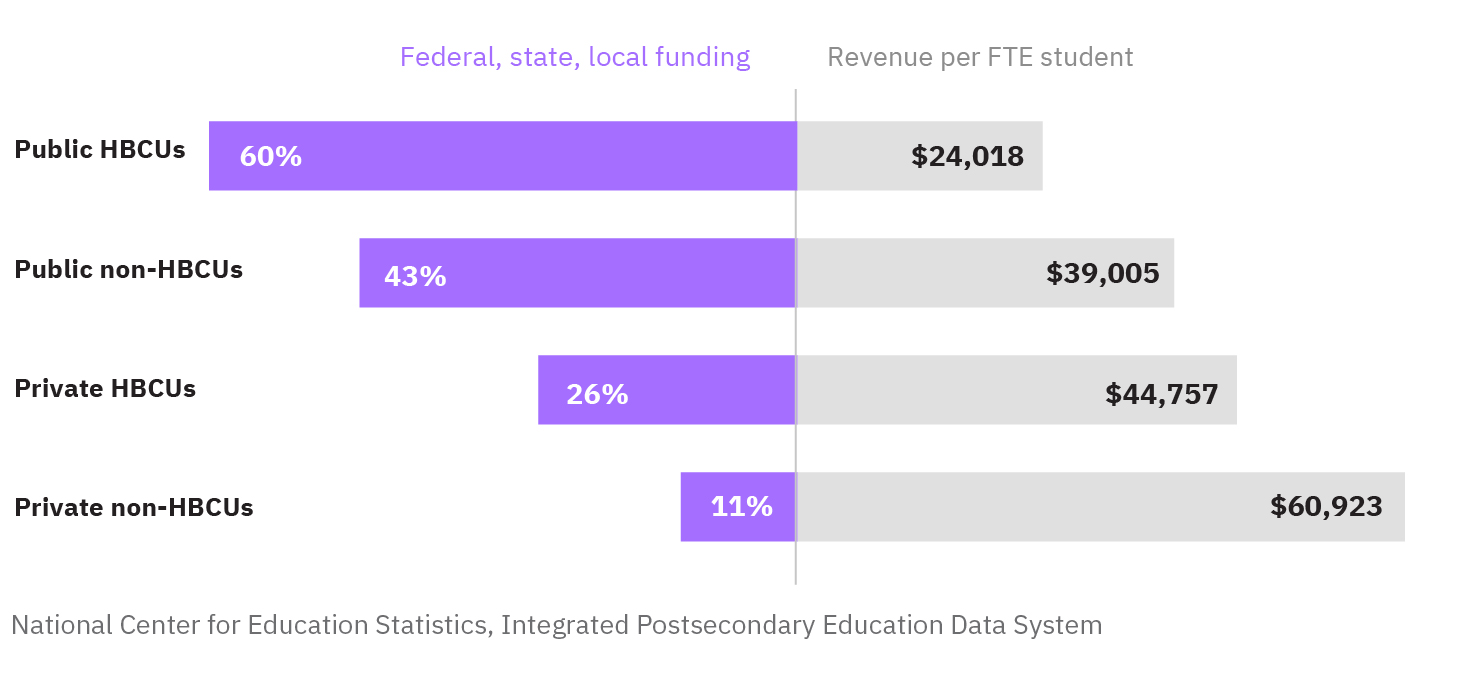Investing in Black technical talent: The power of partnering with HBCUs
In the face of financial and other hurdles, historically black colleges and universities (HBCUs) have had an outsized impact on Black people’s success. HBCUs’ resourceful past points to an innovative future.
Organizations can establish long-term investments in HBCUs, to everyone’s benefit. HBCU students gain the skill development they need to succeed, and companies nurture the talent they need to compete and thrive. Industries also can collaborate with an array of organizations that bolster HBCUs and their talent.
Doing more with less
HBCUs have demonstrated they can innovate to produce an exceptional talent pipeline. Their track record reveals remarkable achievements in preparing the future workforce, despite significant challenges.
A substantial financial disparity among higher-learning institutions puts HBCUs at a real disadvantage. Compared to other colleges and universities, HBCUs rely much more heavily on government funding and see much less revenue per student.
The great funding imbalance: Public HBCUs rely heavily on government funding and operate on less revenue per student than other colleges.

Total 2017-2018 revenues for public HBCUs ($5.4 million) were only 1.3% of revenues for public non-HBCUs ($403.7 million). The revenue differences are stark on a per-student basis, too: just over $24,000 for public HBCUs, compared to about $39,000 for public non-HBCUs. Even Howard University’s impressive endowment of around $700 million is less than a 50th of Harvard University’s endowment.
Add to those numbers the stark reality that HBCUs have faced declining enrollments, reduced funding, fewer degrees conferred, and even the closure of some institutions.
HBCUs represent only 3% of the nation’s educational institutions, yet they have educated 1/2 of Black doctors and lawyers.
Yet despite having substantially fewer financial resources, HBCUs as a group have accomplished a great deal. True to their mission of advancing Black students, they have produced an astoundingly large percentage of diverse professionals from their ranks.
All told, HBCUs enroll only about 9% of Black undergraduates. But they have educated one-half of Black doctors and lawyers. And they produce 1/4 of the STEM undergraduate degrees earned by Black Americans.
Working with HBCUs on technical talent development
Both the private and public sectors need to be more proactive in developing, hiring, and retaining top technical talent, as well as identifying existing skills pipelines. While HBCUs continue to produce talent that is in demand across industries, not all organizations are poised to leverage this talent source.
In this report we’ll explore the elements of successful partnerships with HBCUs so organizations can help drive skill development and build the technical talent they need. With innovation built on initiatives that have already proven successful, organizations can leapfrog ahead—without having to invent a new approach from scratch.
Meet the authors
Valinda Kennedy, IBM Global University Specialty Programs Manager, Medical, Legal, and HBCUsLeah Jones, IBM HBCU Academic Liaison
Dr. Catrenia W.McLendon, IBM HBCU Academic Liaison
Felecia Kornegay, IBM HBCU Academic Liaison
Originally published 05 May 2021


